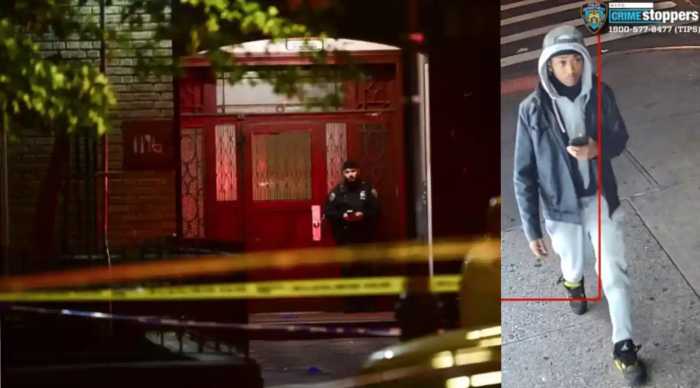A report from an engineering firm contracted to reimagine the crumbling cantilever structure of the Brooklyn-Queens Expressway was released Monday ahead of an oversight hearing in City Council on Tuesday.
Council Speaker Corey Johnson says the city now has seven possible design options for the massive undertaking to essentially undo what one transit official has called shoddy work by Robert Moses. The city must whittle their options down to two proposals.
The first scenario, according to the study, would have all lanes of the roadway brought to grade level and an expansion of Brooklyn Bridge Park would be built over the top.

The second would create a bypass tunnel — similar to the “Big Dig” that buried an expressway running through the heart of Boston — between the Gowanus Expressway to Bedford Avenue in South Williamsburg and rebuild the BQE as a surface street between Cobble Hill to Clinton Hill.

Neither plan is cheap; the first option would cost more than $3 billion to complete, while the tunnel plan would see costs in excess of $11 billion.
Costs aside, Johnson stressed the importance of moving forward with a rebuild of the BQE.
“New York cannot continue to kick the can down the road on redeveloping the BQE. Frustrated by delays and half-baked plans, the Council hired its own engineering firm to determine the best way to spend billions of dollars to rebuild this vital roadway,” Johnson said. “This is not just about rebuilding a highway, this is a once-in-a-lifetime opportunity to build the city we deserve and need in the future.”

But deciding on which plan to pick may prove trickier — and will involve lawmakers in Albany.
State legislation is required to create an I-278 corridor governing body to decide on which of the two approaches is best, the report said, while the city and state would need to be equal partners in governing the highway.
The governing body will also be tasked with identifying other segments of the BQE that will need overhauls in the future and a plan for implementing improvements.
A primary goal while the new section road is being built will be maintaining safe passage for vehicles over the cantilever during the construction period.
While the city plans to implement a crackdown on overweight trucks on the highway and considered cutting lanes from the cantilever, the city essentially has until 2035 to get the lead out an an alternative route.
Weight restrictions for trucks will be enforced with weigh in motion (WIM) technology and cameras; the governing body will also oversee the shrinking of the BQE at the promenade from four lanes to two in order to minimize deterioration of the cantilever.
Although city Department of Transportation Commissioner Polly Trottenberg let the blame fall to Moses, the triple cantilever — constructed in 1936 — was not designed for the level of traffic it carries today.
Originally engineered for 47,000 cars per day, it now supports three times that many — 153,000 cars per day and 1,100 trucks during peak hour alone, according to the report.
At this volume, the only other roadway in the city to beat the BQE in sheer volume is the Queensborough Bridge at 170,000 car on the daily.
An earlier plan to convert the promenade into a temporary highway was nixed by the city. Advocates said this was an historically appropriate move considering the open space was agreed upon by the city government and the adjacent communities. If the city was going to build a highway through Brooklyn Heights, Brooklyners demanded a new park out of the deal.

The report also takes a look at other potential methods for improving the BQE and nearby neighborhoods beyond Brooklyn Heights in the future. This includes “capping” portions of the highway that run through trenches carved decades ago through Brooklyn’s Williamsburg and Queens’ Woodside and Astoria.
Read the full report here and see all seven of the options DOT has weighed on page 60.








































